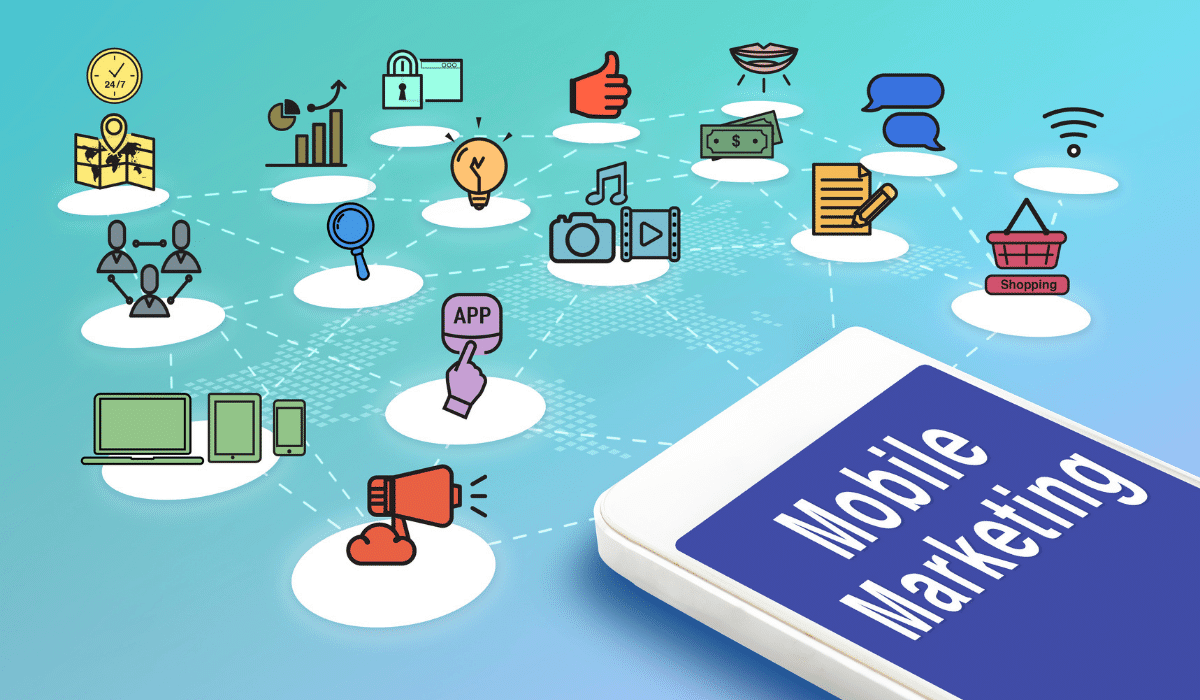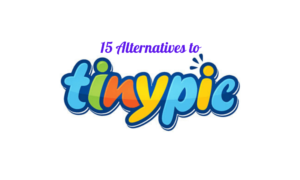Over the years, extensive use of mobile phones has drastically altered how customers shop or consume information online. As a result, new marketing strategies have gained popularity. Many digital marketers even think that mobile marketing has caused a paradigm shift in the advertising industry.
Earlier, mobile marketing was considered an addition to traditional digital marketing focused on computer users. Today, there is no denying that mobile has taken the top spot.
Mobile app marketing is an excellent choice for your company because your customers are connected to smartphones. The primary advantage of mobile marketing is that it creates a customized channel by providing numerous customizing options to the user and the advertiser.
Yet, how do you go forward with it? We will go over the details of mobile marketing in this article so that your audience may interact with your business in a jiffy with the touch of a mobile screen.
What Is Mobile Marketing?
Advertising in any form that uses smartphones for advertising products and services is called mobile marketing. It uses characteristics of contemporary mobile technology like location services. A location-based service allows customized marketing campaigns according to a person’s location.
Modern technology can be applied to mobile marketing to offer customized promotions of products or services to a user who is always connected to a network. This is where mobile marketers step in.
The role of mobile marketers basically involves gathering information about mobile users and figuring out how to make the mobile experience better and personalized for them. They are conscious of the significance of a positive mobile experience as mobile usage has grown and gained extensive coverage in developing countries. In their mobile journey, this entails offering top-notch customer service and experiences.
However, many mobile marketers now rely on feedback gathered from user input, such as giving mobile messages and feedback surveys. Additionally, marketers enjoy conducting analytics from time to time to ensure that the changes they make are significant and successful in enhancing the user’s mobile experience.
Key function areas include:
- Advertising via mobile marketing uses push notifications, mobile apps, and text-based promotions.
- Mobile app marketing has privacy challenges related to data storage.
- Segmentation of the audience for mobile marketing is grouped by behavior instead of demographics.
- Marketing on mobile is far less expensive than traditional forms of marketing via radio, newspapers, and television.
Now let’s dive into the strategy part.
11 Mobile Marketing Strategies that Work in 2025
1. Permissions from Your App Users
Before you start sending an app notification or push message to your user, get their permission. Your audience needs to accept and provide permission to you to have access to their contacts, mobile storage, location, and push message notifications.
Nobody likes spammers. Your brand must respect your users’ privacy and the safety of their personal information. Try to learn more about local and international laws related to spam acts and regulations, privacy, and data safety policies.
Your app must clearly describe how users can unsubscribe or turn off notifications. It must be super easy for them to unsubscribe from push messages and notifications, or else your users may uninstall your app to avoid constant notifications.
Once you get their permission, your platform’s subscriber list officially grows, and then you can plan, create and run different campaigns on your mobile app depending on your goals for your app.
Related: 10 Best Mobile App Analytics Tools (Free Included)
2. Advertising In-Game
Mobile gaming has evolved from being a simple time killer to becoming a global phenomenon.
In 2021, mobile game apps accounted for 78% of Google Play Store revenue. The market size of mobile gaming was $89.6 billion last year alone. Mobile gaming takes about 43% of all mobile phone usage time. Lastly, women play mobile games for 25% longer compared to men.
So, it comes as no surprise why a lot of marketers are jumping to the opportunity of placing advertisements in games. However, the only major concern for marketers is that advertisements annoy gamers. So, placing an ad may have an adverse effect on your brand and the game they are playing on their smartphones. Still, there is a silver lining: if you can create new attention-seeking ads or incorporate ads with game rewards, mobile gamers will respond positively to your brand.
3. Mobile Ads
Mobile advertising is an indispensable part of the marketing team. They drive your target audience’s attention in a direction that syncs with your company’s objectives. Because of this, every marketing team feels compelled to create mobile ad campaigns.
Mobile advertising in the realms of smartphones and apps is not new; it is roughly two decades old. Yet, more than 308 billion dollars will be spent on mobile ads at the end of 2022, followed by 339 billion dollars in 2023, as per Statista.
On the other hand, dislike and skepticism toward intrusive banner ads or advertisements on apps have contributed a lot to the rise of adblockers recently. So it’s crucial for the mobile marketing team to use less intrusive ad formats for a better user experience.
See Also: 5 Most Lucrative Mobile App Niches to Invest
4. Social Media Marketing
Social media’s unrivaled ability in the three key marketing areas- connection, interaction, and customer data- gives social media marketing (SMM) its incredible potential. Setting realistic social media goals is what really matters the most. Tackling and achieving small goals will allow your team to grow organically at a low cost. By the way, the emphasis is on the word “realistic” here.
Here are some of the rock-solid reasons why brands of all sizes should follow social media marketing:
- Increases your brand awareness.
- Help generate leads and convert sales.
- Grow audience bases.
- Increases engagement with your consumers.
- Further increases the chances of driving traffic to your website.
5. App-Based Marketing
App-based marketing doesn’t have a single definition. Instead, there are countless distinct types of app-focused ads. App-based marketing is about keeping your users engaged and loyal to your app.
To accomplish this task, you must identify your audience, learn about their actual whereabouts, and know what to communicate to them. Let’s imagine and see a user using your mobile app in a “funnel.” There are numerous funnel stages: Acquisition, Activation, Engagement, and Loyalty.
The concept of the funnel in app-based marketing is very useful. However, in reality, users frequently switch back and forth between these funnel stages. You may have read about phrases like “User App Lifecycle” and “App engagement loop” before. So to keep engaging your customers at different stages of the life cycle, you will require different strategies and techniques.
6. Location-Based Marketing
With privacy compliance and location permitted by users on the app, a location-based marketing strategy allows one to pinpoint location data from smartphones to places of interest like restaurants, malls, and supermarkets.
Marketing based on the user’s location on the app allows the brand to connect with the target customers personally with online or offline messaging based on their current location. And by using location data, your team can run an outreach campaign to reach the users based on their proximity and invite them to an event happening in their region or run a campaign based on their local language.
The mobile marketing team uses this data to develop analytics based on geographic regions to learn and provide users with ads based on their current location. This approach has been proven successful throughout the customer’s lifetime, from engagement and retention to discovery and purchase.
Also Read: 5 Main Challenges of Hybrid Mobile Application Testing
7. Coupons & Discounts
Mobile marketers might have noticed how brands can influence their users’ behavior when they use coupons to buy anything on their app.
Fewer and fewer shoppers are interested in paying the full price to purchase goods or services. Brands have started adding discounts and coupons frequently to their payment gateway to promote user sales and customer loyalty according to their goals. Banks have also started giving discount coupon benefits to their card users by affiliating with popular apps in different market domains.
Merchants have now started providing “new customer discounts” for users who will make their first purchase on their app. At times, a coupon can probably be available for at least the first three purchases.
8. QR Codes
First thing first. What is this thing called QR Codes? It is a Quick Response code (QR code). This weird-looking black-and-white design in a square box is transforming mobile marketing. When scanned by a smartphone, QR codes become active.
QR codes look similar to traditional barcodes. Your mobile phone’s camera can read the two-dimensional barcode. Generating a QR code is simple and cost-free. Users find QR codes convenient. Brands use them to keep track and price their goods as QR codes provide more data that can be shared and stored.
It can help your brand to leverage mobile marketing at a lower cost to increase consumer engagement and retention. Your app users get linked to different content when your users scan a QR code, such as a website or landing page, a social media profile, a phone number, an email address, or a special offer to buy your product.
Related: 5 Main Reasons for Mobile App Failure
9. Voice Marketing
Brands use various resources and strategies for mobile marketing in which voice marketing is one of them. Voice marketing is being used to promote products and services across different voice platform ecosystems. Smart TVs, smartwatches, home-based electronic devices, cars, and scooters have voice assistant features and can interact with human beings.
Here are the three key points where voice marketing is prominently booming:
- Voice ads. They are delivered through voice-activated home gadgets and podcasts.
- Sonic branding. Here, a business produces its own sounds. Gradually, listeners become accustomed to them. E.g., Apple’s iPhone Tune, Google Notification, Nokia Tune, etc.
- Voice search optimization. Rather than storytelling, your app should offer crisp responses to your users’ queries.
10. Mobile Wallets
Traditional payment methods are gradually being replaced by mobile wallets. The mobile marketing efforts of Mobile wallets include coupons and discounts, buying movie tickets and ordering food online, and many more to engage the users.
These are some of the important stats on the growth of digital payments if you still need more convincing about the usefulness of mobile wallets for mobile marketing:
- Consumers are less likely to use cash because it is anticipated that from 2021 to 2025, the value of digital payments will grow at 12.01% CAGR.
- By 2027, the global market value for mobile wallets is anticipated to reach more than $12 trillion.
- There will probably be over 10 million new Google Pay users and 14 million new Apple Pay users between 2020 and 2025.
Customers have changed their habits to suit a world where contactless payments are prevalent. Mobile wallets are probably catching up to cash and credit cards in popularity, despite the latter being more common. Brands that want to implement a mobile wallet marketing strategy should be aware of current market developments and acknowledge that digital consumers no longer appreciate only one payment option.
11. Augmented Reality
As a concept, Augmented Reality (AR) has been around for a while, but brands have been underutilizing mobile marketing possibilities based on augmented reality. The focus of this mobile marketing strategy is based on creativity and newness.
With the aid of mobile devices, augmented reality marketing becomes a mighty tool that can give brands the ability to improve brand value and, innately, engagement with your app. Along with this, this powerful mobile marketing strategy assists brands in adding a human touch to how your app users will interact with them.
The feature promotes brand awareness, prestige, and loyalty of your users by allowing them to interact with your products and services. Using AR improves user engagement and retention; further, it saves time and allows users to make quick shopping decisions. Mobile marketing of this kind creates enduring memory for your app users.
For instance, a viral mobile app you must have known is made by Niantic — Pokemon GO. Users of this mobile gaming app can find and catch Pokemon by exploring their surroundings (virtually anywhere in the world) in Augmented Reality. This augmented reality mania made more money ($207 million) than any other mobile game in its first month.
See Also: How Much Does It Cost to Make an App for Your Business
Conclusion
Mobile marketing is vital as more people are spending time on smartphones and tablets than ever before. A creative and fresh mobile marketing strategy can be beneficial for any brand. Furthermore, your analytics will enable you to evaluate who visits your app as your target audience expands and assist you in taking your digital marketing solutions to the next level by using this information.
Research shows that users are open to suitable and tailored mobile advertising even after years of mobile marketing have passed. So using the mobile app marketing tools for the upcoming year listed above will assist you and allow you to provide what your customers expect from your app.
— This guest post is submitted by Ryan Allen of GoodFirms. Reviewed and published by Harry.





















